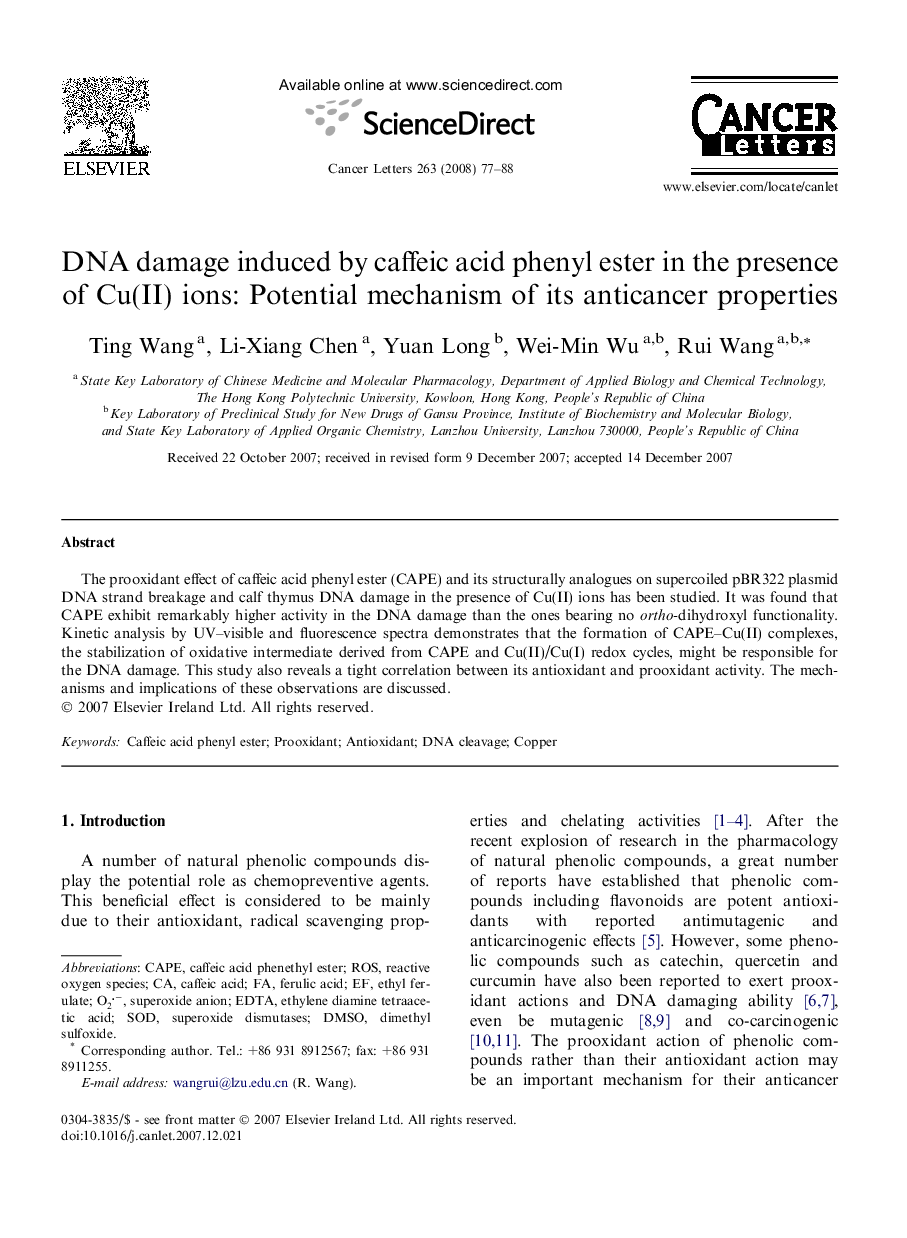| Article ID | Journal | Published Year | Pages | File Type |
|---|---|---|---|---|
| 2114955 | Cancer Letters | 2008 | 12 Pages |
The prooxidant effect of caffeic acid phenyl ester (CAPE) and its structurally analogues on supercoiled pBR322 plasmid DNA strand breakage and calf thymus DNA damage in the presence of Cu(II) ions has been studied. It was found that CAPE exhibit remarkably higher activity in the DNA damage than the ones bearing no ortho-dihydroxyl functionality. Kinetic analysis by UV–visible and fluorescence spectra demonstrates that the formation of CAPE–Cu(II) complexes, the stabilization of oxidative intermediate derived from CAPE and Cu(II)/Cu(I) redox cycles, might be responsible for the DNA damage. This study also reveals a tight correlation between its antioxidant and prooxidant activity. The mechanisms and implications of these observations are discussed.
